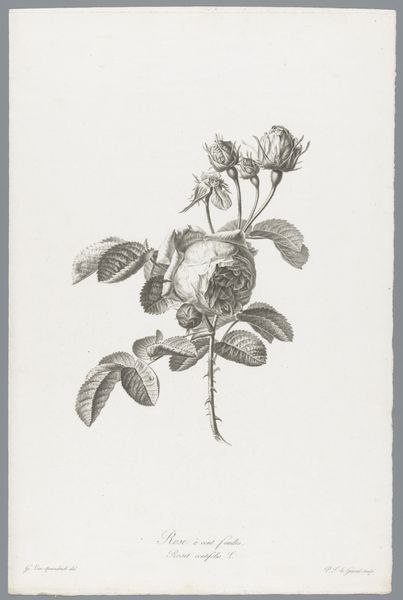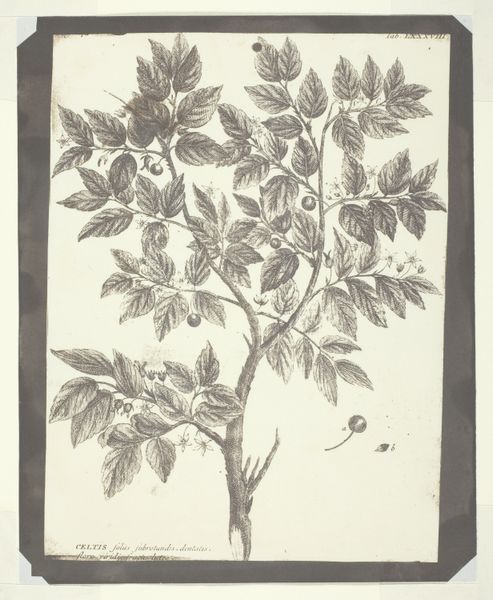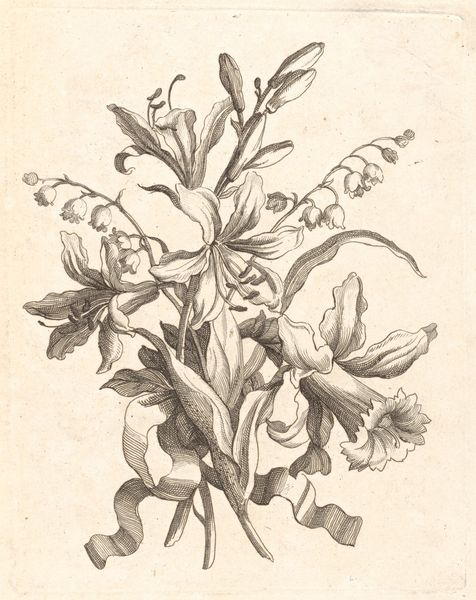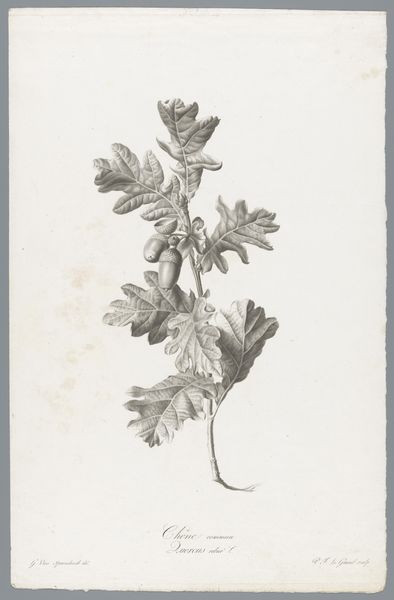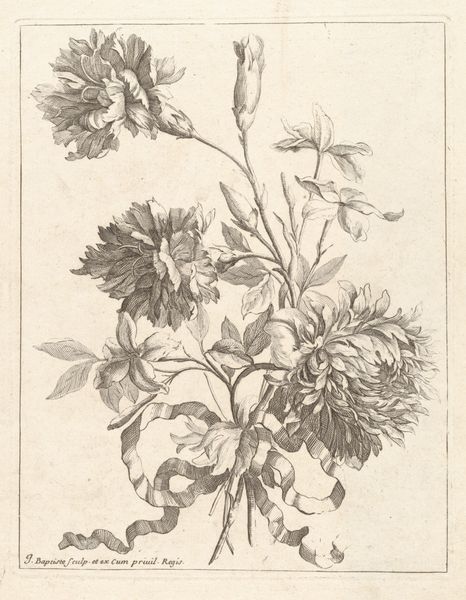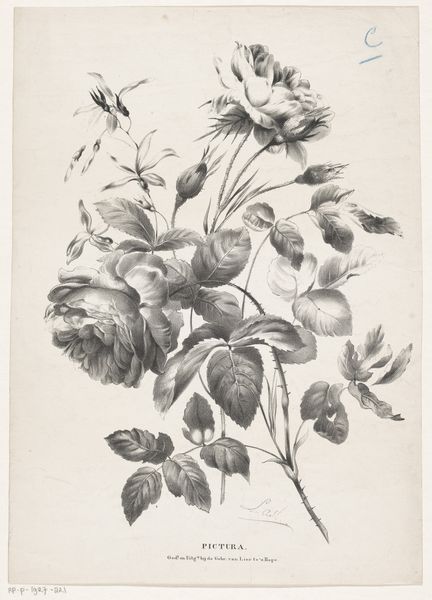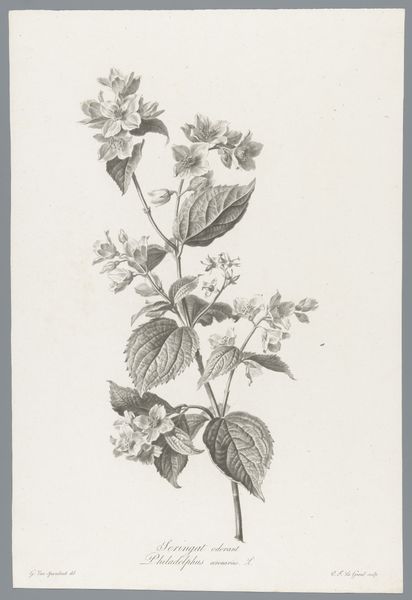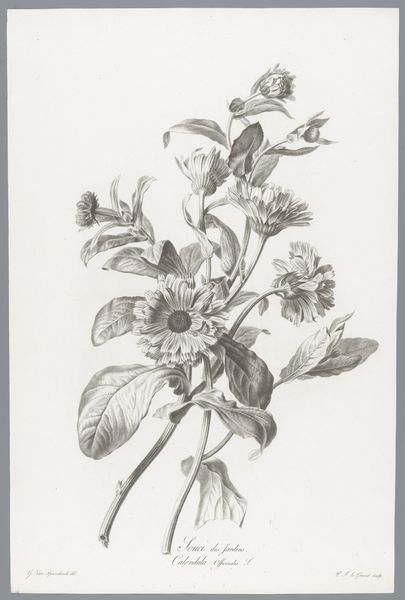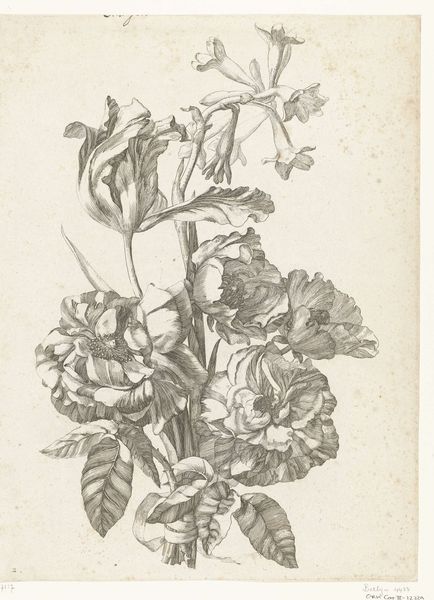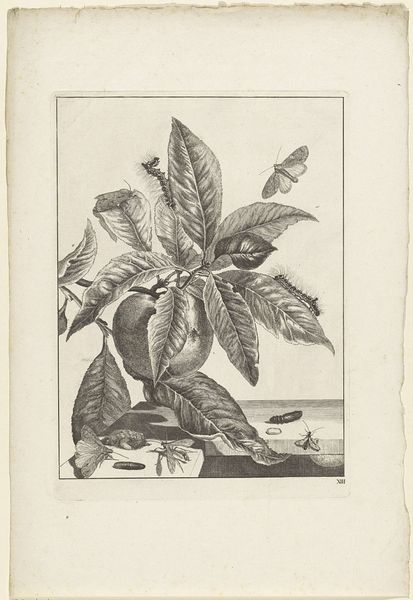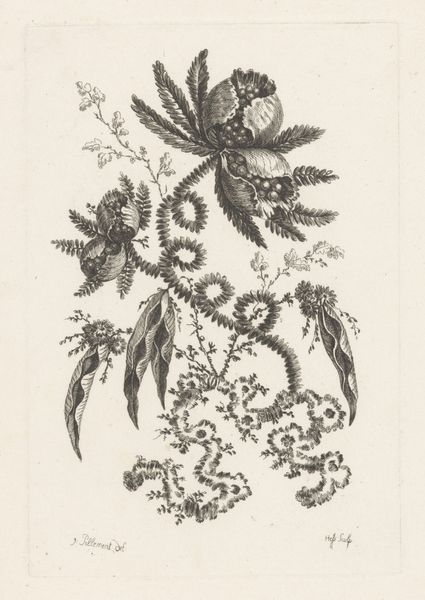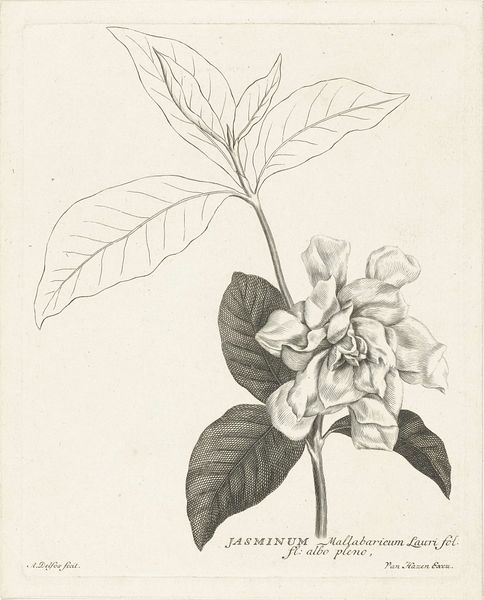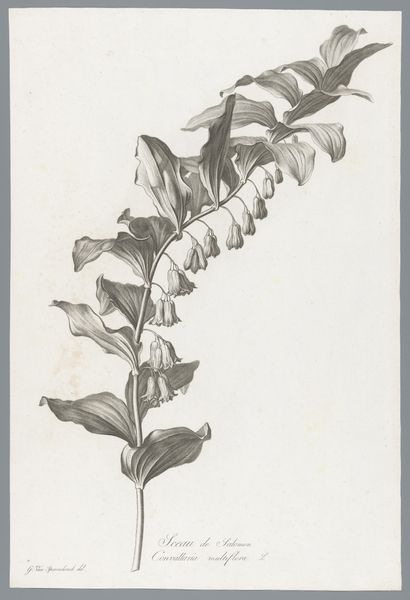
drawing, graphite
#
drawing
#
pencil sketch
#
graphite
#
botanical art
#
watercolor
#
realism
Dimensions: height 507 mm, width 334 mm
Copyright: Rijks Museum: Open Domain
Curator: Looking at this piece, titled "Mispel", dating back to 1799-1801 and created by Pierre François Legrand, one is struck by the incredible detail in what appears to be a study of a medlar plant. Editor: Immediately, I'm captivated by the textures rendered in graphite and watercolor; the roughness of the leaves juxtaposed against the smooth skin of the fruit. It has a raw, almost scientific feel, yet it is very tactile. Curator: The level of realism aligns with the broader artistic and intellectual movements of the late 18th century. We can see how scientific inquiry began permeating the world of art. The work embodies enlightenment ideals concerning observation and categorization of the natural world. Thinkers such as Linnaeus impacted not only science, but all areas of culture. Editor: Yes, and let's consider the material process. A work like this suggests a laborious, almost meditative, creation. Think of the sourcing of pigments, the crafting of pencils...and its function, perhaps as part of a larger scientific inventory. We have here an intersection of labor and art, with botanical drawing deeply connected to the physical world from its inception. The availability of quality paper and precise drawing instruments becomes very significant. Curator: I agree. The artist likely encountered socio-political constraints based on class and the availability of resources, as well. The act of carefully recording botanical specimens—the very practice of it—became implicated in complex power dynamics surrounding resource extraction and colonial exploitation. Editor: Right, how botanical documentation was linked to expansion and access to material resources is important to examine. One has to examine the economic side of botany in art history. The use of drawing rather than oil is something of a clue. Curator: I'm drawn back to that tension, though. Even within this system, is Legrand simply replicating or engaging critically through close attention? Is it also a form of quiet, radical seeing and documentation of our natural resources? Editor: Perhaps. Thinking materially helps us pose those important questions, reminding us that even quiet observation through drawing can echo the complex dialogues surrounding labor, environment and capital. Curator: Absolutely, and through it, we're left contemplating not just botanical art but the interconnectedness of knowledge, power and the subtle gestures of resistance within it.
Comments
No comments
Be the first to comment and join the conversation on the ultimate creative platform.
